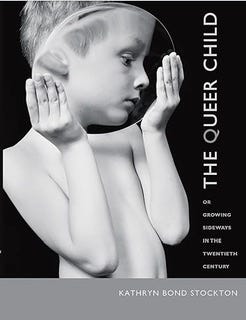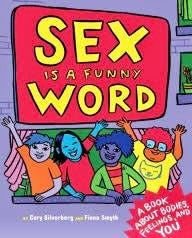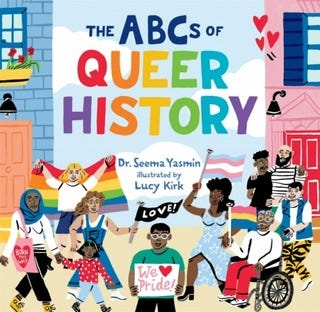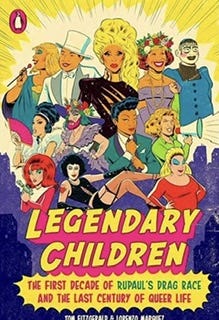In recent years, queer theory has moved from the academic fringe to the heart of public institutions, shaping how schools, therapists, and even families understand childhood, identity, and sexuality. What began as a critique of heteronormativity has metastasised into an ideology that now defines what counts as ‘inclusive’ or ‘progressive’. Nowhere is its impact more unsettling than in its influence on children and young people.
This post is not a moral panic. It’s a developmental, biological, and psychological plea to re-centre the needs of children and their safety to develop a genuine identity during the most vulnerable and formative stages which are presently seriously at risk.
queer theory
At its core, queer theory seeks to destabilise fixed categories such as sex, gender, sexuality, even self. It is proudly anti-foundational, rejecting biological realities and universal truths in favour of endless fluidity. Within this ideological frame boundaries are oppressive, norms are tools of domination and identities are not rooted in nature or evolution but are performative.
If it was confined to abstract academic theorising, it may be relatively harmless but queer theory is no longer confined to university seminar rooms. It has become policy in schools, doctrine in therapy trainings, particularly psychosexual trainings, and youth services. It now dictates how we speak to and about children and how children are encouraged to speak about themselves.
a smorgasboard of identities: natural exploration has become construction
Children are now routinely offered a menu of gender identities: pangender, demiboy, genderfluid, agender, trans, non-binary, and more. This isn’t just about language. It reconfigures identity itself from something to be discovered over time through relationship, body awareness, and developmental growth, into something to choose from a bloated menu, to be declared, and which is political.
This ‘smorgasbord’ undermines the natural, evolutionarily grounded process by which children come to know who they are. Human identity formation has always emerged organically, often painfully and awkwardly, in relationship, first with parents, then with peers, guided by stable sex-based categories and bodily experience. Queer theory replaces this with performance that is socially validated. Instead of encouraging coherence and resilience, it promotes a fragile identity built on external recognition and an ideological script.
It produces confusion, self alienation and a deep rupture between children and the natural rhythms of their psychological development.
Queer theory deliberately disconnects sex from biology. It treats male and female as oppressive constructs rather than fundamental biological realities that shape bodies, brains, and developmental trajectories. This flies in the face of evolutionary science.
For millions of years, humans have evolved clear sex distinctions tied to reproduction, physical development, and social roles. These are not arbitrary. They are the result of adaptive influences that ensure survival, bonding, protection, and continuity.
Childhood and adolescence are biologically sensitive periods. Puberty is a profound and necessary transformation that supports reproductive readiness, neural development, and adult identity formation. Interfering with this process on ideological grounds (e.g. puberty blockers) is not ‘affirming’ it is experimental interference with profound, evolutionarily anchored systems. We have no idea what long-term consequences this will bring.
undermining the parent–child bond
Central to child development is the bond with primary caregivers. Parents serve as emotional regulators, protectors, and guides through the complex and difficult terrain of growing up. Queer theory-driven ideologies, especially in schools, healthcare and increasingly in psychotherapy and counselling, frequently position parents as potential threats to a child’s ‘true’ identity.
Children are told they have a right to privacy from their parents. Teachers are trained to ‘affirm’ gender identity without parental consent. Some health services in can prescribe life-altering treatments to minors without family involvement. This is not empowerment, it is alienation.
It replaces the natural, protective bond between parent and child with a new allegiance to the state, the therapist, or the activist educator. In the name of inclusion and diversity we are dismantling the most foundational relationship in a child’s life.
premature sexualisation and the death of innocence
Queer theory doesn’t just disrupt gender categories it reframes early sexualisation as a form of liberation. Terms like ‘sex-positive,’ ‘diverse relationships,’ and ‘consensual non-monogamy’ now appear in youth resources and sex education. Polyamory, kink, and BDSM are being normalised in spaces meant to be safe for children and teenagers.
This ideology ignores the neurodevelopmental fact that children and adolescents are not equipped cognitively, emotionally, or socially to engage with adult sexual concepts. It accelerates their exposure, blurs essential boundaries, and destabilises the protective separation between childhood and adulthood.
Some theorists and activists even question the very notion of age of consent. They argue it’s a relic of heteronormative patriarchy, not a safeguard. This should sound alarm bells. In the past, similar arguments were made by paedophile advocacy groups. Today, they reappear cloaked in academic jargon and social justice rhetoric.
the furry phenomenon and online sub cultural drift
Another disturbing development, amplified by queer theory’s anything-goes attitude, is the rise of dissociative subcultures like the furry phenomenon. Children and teens are identifying as animals often with sophisticated backstories and communities that reinforce their identity.
While some claim it’s harmless play, others note the underlying dissociation from the body and reality. This can be a coping mechanism for trauma, anxiety, or social alienation but it is being validated, not questioned.
These subcultures thrive in the same online ecosystems that promote gender ideology and sexual experimentation. Once again, rather than helping children regulate their inner lives and develop a grounded identity, adults are affirming fantasies, confusions, and dissociations.
trauma through confusion: the psychological cost
In traditional developmental theory, identity emerges slowly, through experimentation, mirroring, boundary-setting, and repair. Children need stable structures, predictable feedback, and adult containment. They grow by testing the world not by being handed ready-made ideological templates.
Queer theory collapses this structure. It invites children to leap to fixed identities without the time or maturity to reflect. It treats distress or confusion as a signal of hidden identity to be named rather than as a normal part of growth.
This creates trauma through disintegration. Children are asked to make life-altering decisions about their identity before they can legally drive, vote, or understand long-term consequences. Many later report regret, confusion, or psychological harm. And yet, those who speak out are often ignored, mocked, or deplatformed.
the erasure of same-sex attraction: how queer theory undermines LGB identities
A number of desistance and detransition studies show that some teens who initially identified as transgender later reconsidered and in several cases realised they were lesbian or gay. While precise rates vary, this has been a consistent finding across multiple cohorts (see broader literature on desistance trends) .
Dr. Hilary Cass’s final review (April 2024), the UK’s most rigorous independent assessment of young people’s gender care, highlighted a significant rise in youth referrals and noted that many had overlapping mental-health, neurodiversity, or same-sex–attraction issues. She described ‘a dramatic increase’ in assigned‑female referrals and argued that some may have re-channeled same-sex attraction through a transgender label before exploring their orientation more fully.
Many lesbian and gay people have voiced growing concern that queer theory, particularly in its promotion of the ‘trans’ concept, undermines same-sex attraction and the integrity of their identities. Where being gay or lesbian once meant an attraction to the same biological sex, queer theory reframes sexuality as attraction to ‘gender,’ which is fluid, self-declared, and untethered from the body. This shift erodes the meaning of homosexuality itself. Lesbians, in particular, have faced pressure to include males who identify as women in their dating preferences, an affront to both their boundaries and biological reality. Gay men, too, have expressed frustration at being labelled ‘transphobic’ if they assert sex-based attraction. What queer theory celebrates as inclusion often feels to many in the LGB community like coercion, erasure, and the loss of hard-won clarity about who they are.
a war on Western values
Traditional Western values such as parental authority, sexual boundaries, bodily integrity, and the sanctity of childhood are not mere oppressive relics. They are cultural adaptations to protect the young and guide them toward flourishing. Queer theory treats these values as enemies to be dismantled.
It replaces them with performativity, anti-normativity, and adult-centred ‘liberation.’ It celebrates rupture over repair, affirmation over development, and self-definition over interdependence. The result is fragmentation.
conclusion: time to reclaim sanity and safeguarding
We are witnessing a profound shift in how childhood is understood and treated. Under the influence of queer theory, we have replaced constructive development with deconstruction, biology with ideology, and safeguarding with the celebration of transgression.
This is an abdication of adult responsibility.
Children and young people deserve the right to grow up in a world where their bodies are not questioned, their developmentally expected confusion and distress is not pathologised as a gender identity struggle, and to have caregivers in all aspects of their life who are advocates not adversaries. We need to reassert the values of protection, developmental care, and the slow emergence of identity in relationship.
This is not a call for rigid sex binaries or to shame those who are different, it’s a call to re-centre child development, evolutionary biology, and basic safeguarding in all our interactions with children and young people.
The cost of failing to do so is not theoretical. It is already being felt in the clinics, consulting rooms, classrooms, and in the lives of confused, over-exposed, and under-protected children.
Andrew Doyle tells us in his most recent book ‘The End of Woke’ that progressive activists aligned with ‘woke ideology, including critical gender and queer theory proponents, make up just 8–10% of the population, citing a study by the group More in Common; he argues that a small vocal minority has wielded outsized influence over public institutions, shaping health and education policy in ways that don’t reflect the broader public sentiment. As psychotherapists and counsellors I think we should be humble and bear this in mind in our professional bodies, work, training and supervision. There are more of us that them. We have a duty to children and young people in particular to stop queer activists undue influence.
references
Jorgensen SCJ, 2023, Transition Regret and Detransition: Meanings and Uncertainties, PMC, Springer
resources








Really important challenge to the war on childhood, Sue. Thank-you once again for brilliant insights. Yes, indeed time to restore sanity & safeguarding. Perhaps we need a one-two punch kind of approach though? Punch one is restoring sanity safeguarding by providing resistance & counter-narrative education like this article. Punch two is where we go on the offensive because we might need more than a restorative approach. I think the institutions and individuals who are complicit are actually committing very serious crimes for which they need to be held to account. Satan's little helpers, the lot of them
Queer has taken over and colonized the LGB community and used them as cover to promote their plague. Everything in SF is now queer, there is no mention of gays or lesbians, The library did queer history programs before Pride which was themed ,"Queer Joy is Resistance". I'm an aging straight married guy who has been in SF over 50 years and am clear this is not what Harvey Milk had in mind.
"No man chooses evil because it is evil. Rather he mistakes it for happiness, the good he seeks". Mary Wollstonecraft